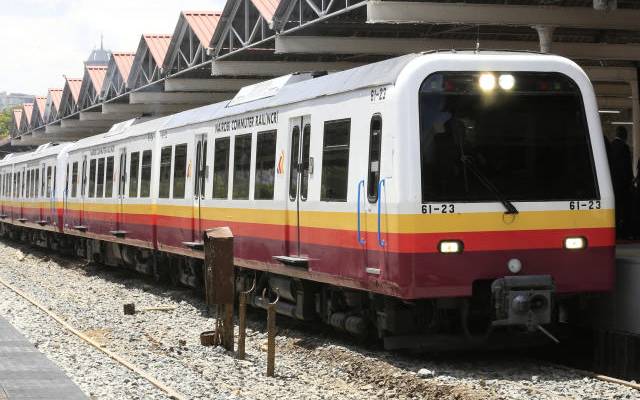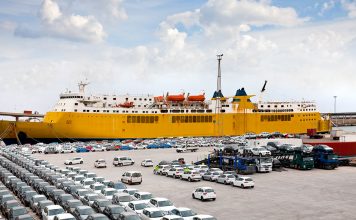Few things are as much of a hassle as public transport in Nairobi.
The masses are at the mercy of a system that is underdeveloped and typically overwhelmed by the fast-growing number of urban dwellers.
And even if you are in a private vehicle, driving in the capital city can be a nightmare as matatus run roughshod over motorists, changing lanes at will and stopping for passengers outside designated stops.
Successive regimes have tried to tame the excesses of public transport, but few reforms stick long enough to reverse the anarchy.
Now, the launch of a commuter rail service carries the hopes a city where more than eight in 10 people use public transport or walk to get around Nairobi.
The opportunity
When he opened the doors to the new-look Nairobi Central Railway Station on Tuesday, President Uhuru Kenyatta did so with an assurance to public transport operators in the city not to see the government investment in an integrated mass transit system as a threat, but rather as an opportunity.
“We should work together and make sure that we are providing better and modern services to the public. We are not competing with anyone, I am asking everyone to work with us and develop our city to better the services we offer to the public,” he said.
The president said the new commuter rail service was informed by transport challenges in urban areas, especially from matatu operators who continue to frustrate efforts to decongest the city.
A government bid to relocate matatus from the city’s central business district failed in 2008 when President Kenyatta was the minister for Local Government, and again in 2015 and 2018 when the county government renewed these efforts.
According to a Nairobi Bus Rapid Transit (BRT) report released last year, there were an estimated 10,000, 14-, 25- and 33-seater vehicles in the city’s public transport system.
But with the mass transport plan that has been developed by the Nairobi Metropolitan Services (NMS) and the Nairobi Metropolitan Area Transport Authority (NaMATA) begins to take shape, the matatu industry is expected to be pushed out of its comfort zone.
On Tuesday, the city inaugurated a new commuter rail service across 10 stations managed by Kenya Railways in the Nairobi Metropolitan area that will be served by modern trains, referred to as diesel multiple units (DMUs).
They promise to offer a faster and more convenient commute and will interlink with a BRT system.
“Congestion has cost this city billions of shillings, and as we develop Nairobi City and look at its future, we have to make sure that we integrate road transport with the rail system,” said Transport Cabinet Secretary James Macharia.
And yesterday during his State of the Nation address, Uhuru reiterated that the new rail system would “dramatically change the public transport experience in Nairobi and across the Metropolitan Area”.
Relocate matatus
Kenya Railways is primed to benefit from the multi-billion-shilling public road transport industry with the introduction of high-capacity buses that will move commuters from the 10 stations into the city’s CBD.
The buses will compete with matatus for commuters to Industrial Area, Parklands, Pangani, Westlands and Upper Hill.
The buses will be stationed at the Nairobi Central Train Station where matatus currently plying the Mombasa and Ngong Road routes are located.
At the same time, NMS plans to relocate existing bus termini within the city centre to its outskirts as the State actualises the Bus Rapid Transport.
NMS said it is almost done with the construction of a terminus near the Nairobi Railway Club, where all matatus that are currently operating from the Nairobi Central Railway Station will be transferred.
The facility will serve PSV vehicles plying the Ngong, Langata and Mombasa Road routes.
NMS has planned for other matatus termini along Desai Road and Park Road in Ngara.
“We are currently building the bus termini that will cater for most routes but before we move the matatus from the CBD, we will want to ensure that these bus termini are within walking distance or somewhere where passengers will be able to get transport from BRT buses to the CBD,” NMS Director-General Mohamed Badi said yesterday.
Kenya Railways is set to further expand its network and services by shipping in six more DMUs and constructing an additional 20 mini-train stations along the Kikuyu, Ruiru and Embakasi line.
The station will connect to newly built stations in Pipeline and Donholm, as well as eight other stations that are served by the railway.
The mass transit plan is being implemented in phases and is expected to provide a dynamic solution to the challenges of congestion and limited alternatives for mass transport.
Already, NaMATA has gazetted 12 mobility corridors, five of which are BRT corridors that Uhuru said have been contracted out, and work is set to begin.
“We are working towards ensuring that these corridors are secured in law to ensure the future expansion of transport networks will be done easier and at a much-reduced cost,” the president said.
NaMATA has fenced off an area outside Kasarani Stadium and sections of the highway up to Safari Park Hotel where the BRT line system will be built.
https://youtu.be/Oivn9b2HcCI
SOURCE: https://www.standardmedia.co.ke/kenya/article/2001393708/all-aboard-how-rail-system-plans-to-fix-mass-transport




![Top 20 Used Cars to Avoid Buying in Kenya – [PHOTOS]](../../../blog/wp-content/uploads/2013/11/top-used-unreliable-cars-to-avoid2-80x60.jpg)


![Top 20 Used Cars to Avoid Buying in Kenya – [PHOTOS]](../../../blog/wp-content/uploads/2013/11/top-used-unreliable-cars-to-avoid2-100x70.jpg)



